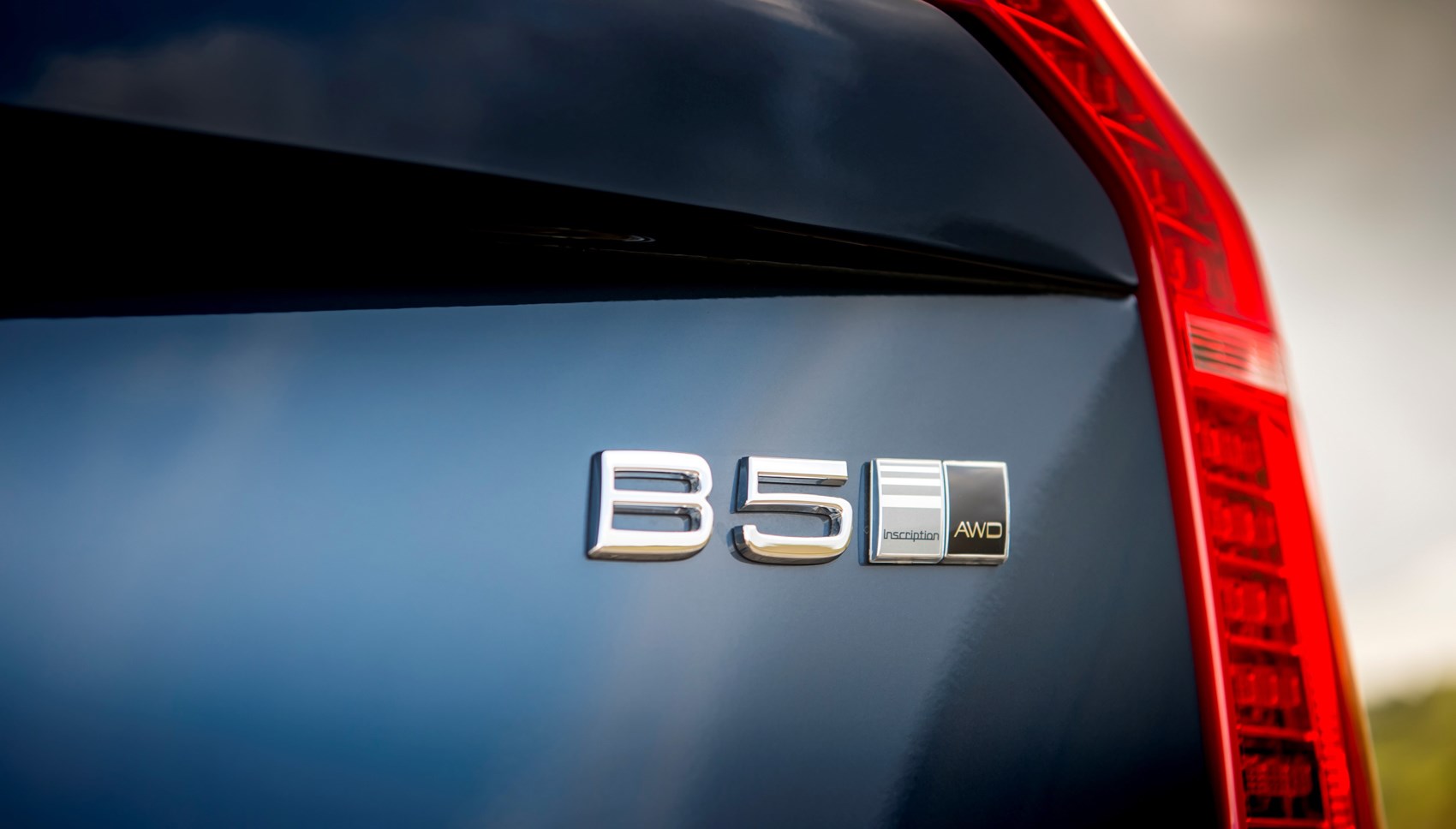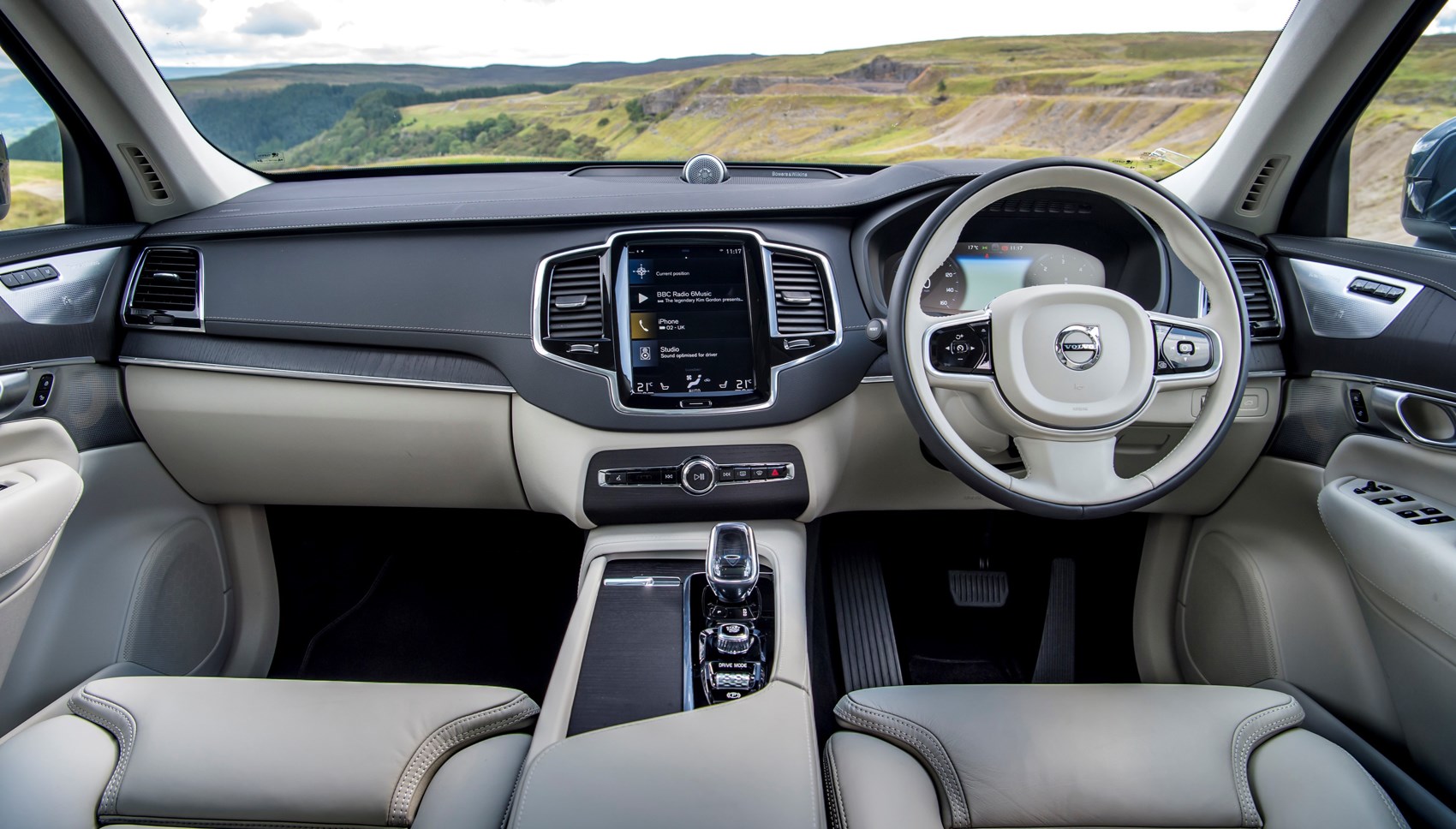► Exclusively hybrid
► Superb semi-autonomous tech
► Less likely to be parked badly outside of a school than a Range Rover
Swedish designed, splendid interior, enough room to house a family, dubious bits of crystal. We could be writing about Stockholm’s Royal Palace, but we are in fact talking about the Volvo XC90.
Like Sweden’s answer to Buckingham Palace the XC90 is a huge, regal thing that’s pretty old. It’s been around for five years now (Volvo, not the Queen’s residence) and won’t be replaced until 2021.
Buyers in the market for seven-seat luxo-tanks are well catered for, so the Volvo has lots of rivals. Other frontrunners include the Range Rover Sport, Land Rover Discovery, BMW X5, Audi Q7, and Mercedes-Benz GLE.
Volvo XC90 engine options
Big news here: while Volvo still offers diesel, all of the engines available are hybridised in some capacity. They’re all 2.0-litres too.
The cheapest engines are the B5s. Confusingly, B5 can be petrol or diesel – but they’re both mild-hybrids – meaning they recuperate energy when braking, which can then be used to aid economy or acceleration later. No need to plug in, but no pure electric driving either.

In B5 diesel form (the only black pump option) it’s superb. Volvo reckons it’ll crack more than 40mpg, while thanks to 235hp and 480Nm of torque, the 0-62mph is a respectable 7.6 seconds. This is the one to go for if you want peaceful progress and don’t care what the neighbours think about your appetite for diesel. Although thanks to the badging, nosey neighbours won’t be writing in Facebook groups about a diesel SUV clogging up their streets.
We digress. The B5 petrol offers up 250hp/29.1-32.4mpg/7.7seconds. We’d recommend the more powerful B6 engine. It offers up another 50hp which makes it feel less strained than the B5, while offering near identical MPG levels. Admittedly, both B5 options are more than capable of transporting Hugo and Imogen to school and back.
Interestingly, there’s a plug-in hybrid XC90 called the T8 Recharge. This offers up obscene MPG/power combination because of its turbocharged and supercharged 2.0-litre petrol engine that’s teamed with electric power.
Read CAR’s Volvo XC90 T8 Recharge review
How does the XC90 drive?
The optional air suspension system will be a popular fitment for most buyers and with it the XC90 is a fantastically refined drive, blending a superbly pliant ride with good body control and a steering fluency old SUVs could only dream of.
You can tweak the suspension system to your taste, switching between drive modes that also re-calibrate myriad other parameters, from throttle response to steering weight (always on the light side but nicely judged and responsive), but even in Power mode the big Volvo hangs onto its ride quality.
There’s a little roll if you’re pushing but generally the handling is composed and trustworthy. Besides, to drive the XC90 like this is to miss out on its great strength – an incredible refinement born of that plush ride, the interior’s calm ambience and a hushed lack of any wind or road noise.

Its real party piece is its ability to demolish long motorway slogs. At 70-80mph it simply rolls over rough roads and sends nearly no feedback to your back and bottom. Volvo’s semi-autonomous tech, called Pilot Assist, is also far better than some other systems. It’s smooth and methodical, and super easy to use. Set the distance from another car, adjust the speed, and it’ll do the rest.
The eight-speed auto gearbox is best left in less racy modes; switching to Power does the engine no favours, revving it past its best, shifting clumsily between the lower gears and making a bit of a racket that’s at odds with the XC90’s otherwise Zen-like sense of tranquility. There is also a big delay between putting your right foot down and making any progress – something particularly annoying at roundabouts.
Skip the auto-hold feature too. It doesn’t let the car crawl at low speed whatsoever, whanging the handbrake on far more often than is useful.
The XC90 is big, but is it clever?
Much has been made of the vast central, driver-orientated touchscreen interface and there’s no doubt it rids the dashboard of ranks of ugly buttons. It works very well, requiring only the lightest of taps and scrolling through different pages in a very intuitive, very Apple-esque manner, allowing you access everything from head-up-display brightness to navigation.
But for functions you use frequently, like climate, you can’t help but feel the touchscreen interface is an inferior solution, being slower and impossible to use without taking your eyes off the road.
This screen, with its big bezel, is also beginning to feel its age. Mercedes’ latest super-swish system feels more modern, while Audi’s double display setup with heating controls on the lower screen is easier to use.
Elsewhere there’s evidence of thousands of hours of clear-headed Swedish thinking. Impressively the third row of seats is comfortable for adults and blessed with real legroom, a decent view ahead and its own air vents. The second- and third-row seats both stow for a completely flat load bay floor, while the power-operated boot and lowering function (a button in the boot drops the load bay 50mm on the air suspension) make loading a doddle.
There’s also a raft of Intellisafe safety aids, from collision-avoidance technology to new systems that brace the car and its occupants for impact should it detect that you’ve left the road or that a car approaching from behind isn’t going to stop in time.
Volvo XC90: verdict
A hugely practical, handsome, and cleverly engineered luxury SUV that isn’t a Range Rover – and doesn’t come with the same Range Rover image. Not as keen to drive as a RR Sport, not as flash as a BMW X5 – whether they’re good traits is up to you.
The best hybrid SUVs – on CAR